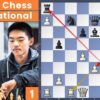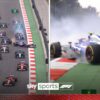In the perpetually evolving realm of competitive esports, a developer`s single adjustment can send ripples across a global player base. Valve, the revered architects behind the monumental Counter-Strike 2 (CS2), has recently unleashed a pre-release update that, predictably, has sparked fervent discussions. This isn`t merely a routine patch; it`s a meticulously crafted refinement, particularly concerning the critical act of bomb defusal, poised to significantly reshape tactical engagements.
The Subtle Art of Defusal: A New Tactical Calculus
The crux of the recent CS2 pre-release update, identified as version 1.41.3-rc1 and deployed to the beta depot on October 14th, 2025, primarily targets the very heart of the bomb scenario: defusal mechanics. Historically, defusing offered a degree of flexibility, allowing players to maintain weapon visibility and react instantly. Valve`s latest iteration introduces two pivotal changes:
- Obscured Vision During Defuse: While a player is engaged in the precarious act of defusing the bomb, their weapon viewmodel will now visibly lower. This seemingly minor visual alteration fundamentally restricts a defuser`s ability to scope in with scoped weapons, such as sniper rifles. It mandates a more dedicated commitment to the defuse, removing the convenient option for concurrent long-range surveillance.
- A 150-Millisecond Firing Delay: Perhaps the most contentious modification is the imposition of a 150-millisecond delay before a weapon can be discharged after a player ceases defusing. This fractional window might appear insignificant on paper, yet in the high-octane environment of CS2 competitive play, where milliseconds dictate victory or defeat, it is an eternity.
The Echoes of Change: Impact on Fake Defuses and Clutch Scenarios
These adjustments are far from superficial; they delve deep into the strategic core of CS2 tactical gameplay. The renowned “fake defuse” — a sophisticated maneuver involving tapping the bomb to lure out an opponent, then immediately retaliating — has long been a hallmark of advanced post-plant strategy. It`s a testament to quick thinking, precise timing, and steely nerves.
With the advent of the new 150ms delay, the efficacy of this iconic tactic is considerably curtailed. Defenders attempting such a feint will find themselves agonizingly vulnerable for a brief yet critical moment, potentially transforming a brilliant outplay into a calamitous error. The community`s immediate reaction was swift and unequivocal, with one vocal fan articulating a widely held sentiment: “No AWP scope and firing delay after letting go of defuse is just lowering the skill ceiling, though. Please reconsider.” This perspective underscores a prevalent concern that the update might inadvertently simplify tactical depth rather than enhance it.
Furthermore, high-pressure clutch situations, where a solitary player endeavors to overcome multiple adversaries, will undoubtedly bear the brunt of these modifications. Every millisecond is paramount when attempting a bomb defusal under duress. The inability to seamlessly transition from defusal to combat readiness could frequently prove to be the deciding factor. Valve, in its characteristic fashion, appears to be compelling players towards more definitive actions, effectively curtailing the multi-tasking capabilities previously afforded to a defusing player.
Beyond the Bomb Site: Engine Upgrades and Performance Optimizations
While the intricacies of defuse mechanics have seized the spotlight, the update isn`t exclusively focused on gameplay nuances. Valve has concurrently upgraded CS2`s engine code to the latest iteration of Source 2. This foundational architectural enhancement promises not only superior stability and graphical fidelity but also paves the way for advanced future development capabilities.
Additionally, the update incorporates significant improvements to the core utilization of various effect processing mechanisms. Specifically, these enhancements are designed to reduce CPU usage when a player is firing a weapon. This constitutes a highly anticipated technical optimization, directly addressing performance concerns that frequently accompany new game releases and ensuring a more fluid experience across a broader spectrum of hardware configurations. It’s a practical concession amidst the more contentious gameplay tweaks.
The Perpetual Beta: Valve`s Iterative Development Philosophy
It remains imperative to acknowledge that this is a “pre-release update” for a title still very much in its formative stages, despite its lineage from a legendary predecessor. Valve`s well-documented history with flagship titles like Dota 2 and even the original Counter-Strike series exemplifies a steadfast commitment to iterative development. Public betas and pre-release phases serve as indispensable testing grounds, where invaluable player feedback is, in theory, diligently processed and utilized to refine the final product.
The community`s immediate and fervent response to the defuse alterations perfectly validates the existence of such pre-release periods. Whether Valve will heed the calls to “reconsider” or maintain its current trajectory remains a topic of considerable speculation. The ongoing dynamic discourse between developer and player base stands as a testament to the profound passion surrounding CS2 — a game where even the minutest detail can profoundly influence the equilibrium of a multi-million dollar esports ecosystem.
As the competitive landscape continues to unfold and players are compelled to adapt (or, perhaps, vociferously object) to these evolving mechanics, one truth persists: Counter-Strike 2 is embarked upon a continuous journey of evolution. It persistently seeks that elusive equilibrium between profound tactical depth, raw player skill, and broader accessibility. And with Valve steering the ship, sometimes, the most effective path to discovering that balance is to simply drop the bomb and observe who ultimately manages to defuse it under the most intense pressure.








